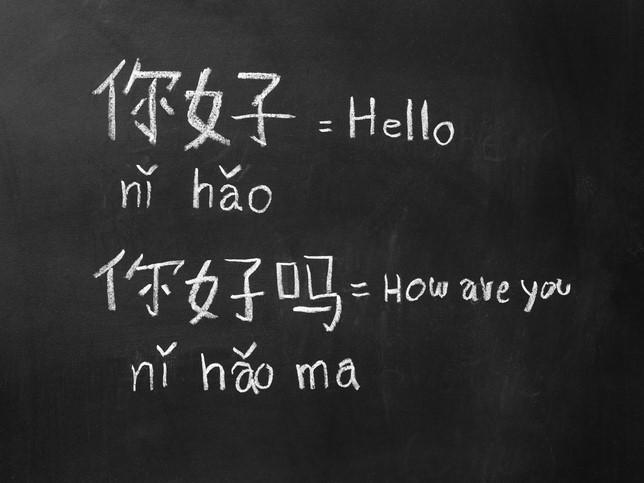My killer teaching tool isn’t video, audio or interactive graphics. It’s the plain written word, using tools created in the 1980s. They don’t look cool. They don’t use blockchains or AI. There’s no sign-in. They don’t spy on my students. They don’t require a powerful computer. Welcome to the joy of text.
The British television quiz University Challenge begins with competitors introducing themselves and the subject they are “reading”. Indeed, some universities still employ readers, a combined teaching and research rank. But to say you are reading is quaint language. Fine, perhaps, for loafers in straw hats and blazers, sitting on summer lawns with a picnic. But administrators mock such shirking indulgence.
For cognitive and social scientists, a question remains whether text or audiovisual content is best for learning. It depends on the material. Broadly, studies show active reading has the edge, creating an “objective” experience. The reader inhabits an imagined world or character, in contrast to the passive, subjective audiovisual mode. Reading favours comprehension and retention, and pips student preference, giving the learner more control.
- Enhancing learning from digital, audio and video resources
- Five reasons why primary sources should be used for teaching
- Improving learning through physical action and sensory perception
Why, then, is it denigrated as a second-rate learning style by so many managers? In our zeal, are we technologists dodging an awkward truth: that some human activities are already fairly optimal? Are perceived shortcomings just symptoms of economic and cultural shifts? Do we fetishise high-tech teaching, perhaps, to attract prospective students? After all, no self-respecting university lacks (presently empty) “state-of-the-art learning labs”.
As we rush, post-pandemic, into digital solutionism, where do we pause to allow our students reading time, to absorb knowledge at their own quiet pace minus breathless interactivity?
I’m a believer in plain text and reading. To say: “Hello, class” in a two-second video clip needs a megabyte of data. Spoken audio needs 100 kilobytes. It takes precisely 12 bytes of text. That’s 100,000 times more efficient than video. Uncomplicated plain text needs simple technology. Cognitively, reading is a juggling act requiring many parts of our brain. Processing is therefore shifted from the machine to the learner, and via that effort memory engrams are created. Students think about content, not technological distractions.
Leveraging thousands of years of human development, text performs the task of transferring knowledge from one mind to another. It works offline or in real time, without speaker collision, for the one, the few or the many, in series or parallel, in large or small chunks and across multiple platforms and protocols.
A kaleidoscopic audiovisual firehose inhibits learning, whereas plain text restores the advantages of slower pace and requires that we organise information spatially. Digesting and ruminating information is necessary. That is why we call it “browsing” the web. Where big-tech web services fail in accessibility, the essential transformability of text reaches deaf students via speech-to-text and blind students through text-to-speech.
For teaching, I love email. In the age of WhatsApp and Instagram, email is dead, right? Wrong. Electronic mail remains a keystone protocol. A dirty secret of the internet (like Cobol still running everything) is that email makes the world go round. It’s available to all, freely, pseudonymously, without censorship, and it provides good-enough near-instantaneous delivery. Email attachments handle any file of moderate size. This year I’ve exchanged about 2,000 emails with students, ranging from fast conversations in a chat-like time frame to detailed, long-form discussions over many months.
But my all-time killer application of the 2020/21 pandemic is internet relay chat (IRC). Like email, it is an old, free and open standard using plain text. It runs on all platforms. Around the world hundreds of volunteer IRC relays, run by non-profit organisations and larger universities, participate in communal global infrastructure. Compared to Teams or Zoom, IRC is distinctly low tech. That’s a wonderful feature. Zoom or Teams will bring a £2,000 high-spec computer to its knees while IRC joyfully runs on a £20 toy computer, and most likely on your toaster.
For students in shared accommodation with poor internet connectivity, free, lightweight, interoperable tools save the day. An IRC chat room holds hundreds of participants having equality of voice, thanks to concurrent many-to-many operation. Side chats can break away into private messages. With a few commands, learners may focus on voices they want to follow. Rooms may go silent for months yet still persist for students who want to drop in and leave a message. One channel I run has been active continuously since March 2020. Try doing that with Teams.
Relaxed pseudonymity brings out the best in students. Demands for real names or forcing students to appear on camera is oppressive. Students today are silenced by fear. Self-censorship and inhibition are part of the damage done by mass surveillance, pressure to conform and identity anxieties.
Videoconferencing has its place, but despite management wishing it so, live online lectures don’t really work − and professors are reluctant content creators. The phrase “all Zoomed out” signals a dearth of stamina for remote interactive work.
Plain text has a bright future for study. We don’t need more complex and insular proprietary teaching tools; we need to make more intelligent use of the powerful, standardised, interoperable foundations we already have in computing. As this interregnum of the virtual classroom works itself out, expect to see a resurgence of live and asynchronous text as primary tools for off-campus work and the return of reading as a mainstay of self-directed study.
Andy Farnell is a British computer scientist specialising in signals and systems. He is a prolific speaker, visiting professor, consultant, ethical hacker, author and lifelong devotee to digital rights. He is teaching cybersecurity while writing a new book, Ethics for Hackers.
If you found this interesting and want advice and insight from academics and university staff delivered direct to your inbox each week, sign up for the THE Campus newsletter.




comment